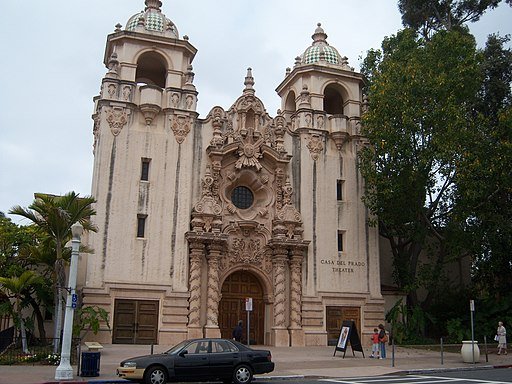What is the difference between Spanish Colonial and Mission Revival architectural styles?
Both styles are inspired by Spanish architectural traditions but have their own unique characteristics. Understanding the differences between Spanish Colonial and Mission Revival architecture is not only fascinating but also helps us appreciate the beauty of these styles. They both grew out of the new cultural identity forming in the American Southwest at the turn of the 20th-century, they share essential similarities; but there are also important differences.
Prior to about 1920 buildings and homes built in Southern California that sought to revive the area’s Spanish Colonial past were primarily based on the Missions. That changed after the Panama-California Exposition of 1915, in San Diego, which celebrated the 1914 opening of the Panama Canal. This critical new transportation infrastructure streamlined the flow of goods and passengers between the Atlantic and Pacific oceans, and more importantly, between the two coasts of the United States.
Photo credit: Nelro (talk)
Construction of the Exposition began in 1911 with both permanent and temporary buildings planned for the newly defined Balboa Park. The architects of the project deliberately turned away from the more modest and austere architectural forms found in the California Missions, instead drawing inspiration in the more richly ornamented Spanish and Mexican Baroque styles, found in both the New World and the Old. Previous American Expositions and World’s Fairs were designed to reference European Beaux-Arts styles, so drawing on the rich cultures south of the border was a radical proposition.
This interest in all things Spanish was compounded by World War I, 1914-1918, which restricted architects from traveling to many parts of Europe to study the grand monuments of the continent. Diverted South, architects were inspired by the rich traditions found in Spain which melded Islamic, Moorish, and Mediterranean cultures.
Spanish Colonial Revival Style broke away from the ecclesiastic rigor of the Mission Style, adding ornament and variety. Low-pitched red clay tile roofs and thick walls finished in smooth stucco remained the norm, but the play of massing, which replicated the way rural houses were added to over time, broke up the planar Mission façade. These newly articulated compositions were further differentiated with the addition of stylized ornamentation, including balconies, courtyards, patios, and cast iron details. The Hispanic Revival movement now had the permission to be creative.
The interiors of Spanish Colonial Revival homes featured tile floors, sometimes limited to just the entry, with smooth plaster interiors. Decorative features such as ornately carved doorways, tile risers, wrought iron lighting fixtures, railings and other metalwork, and colored glass windows, were common. Wood or plaster beams often accented living and dining rooms, sometimes with multicolored stenciling. Despite the Mediterranean climate of Southern California and the Southwest in general, fireplaces were central features of the living room, often decorated in ornamental plaster and tile. Wall surfaces were primarily plaster, a distinct change from the proliferate use of wood millwork and paneling of the Craftsman period. The aesthetic of a Spanish Colonial Revival home focused on revival and a connection to a forgotten culture.
Though the interior plaster walls presented as plain and austere, by contrast, the baths and kitchens were explosions of color. Tile was still the norm, but no longer primarily white. Bathrooms and kitchens were not bashful in their choice of color pairings, often featuring combinations like green and yellow, or red and black – or even purple and black. Experimentation with color was common; some manufacturers even used uranium and lead in glazes, as they both produce rich colors!
The booming economy of the 1920’s meant more opportunities for home ownership. Developments in Southern California, particularly in Los Angeles, related to the expansion of the movie industry. With the introduction of sound in the early 20s, the expansion of the aviation industry, the rise of the car, and the discovery of oil, an influx of workers meant a greater need for more homes. In response, simple one-story stick and stucco homes, cheap to build, popped up all over Los Angeles and Southern California. Los Angeles alone grew from a population of around 100,000 at the turn of the century, to over 1.2 million by 1929.
The Spanish Colonial Revival Style was not limited to affordable housing, as spectacular mansions and commercial buildings were designed in the style, as well. The Mission and Spanish styles began as an interest in reviving the disappearing cultural past of this newly acquired land called California, but the styles soon became inextricably tied to the identity of the region itself.





